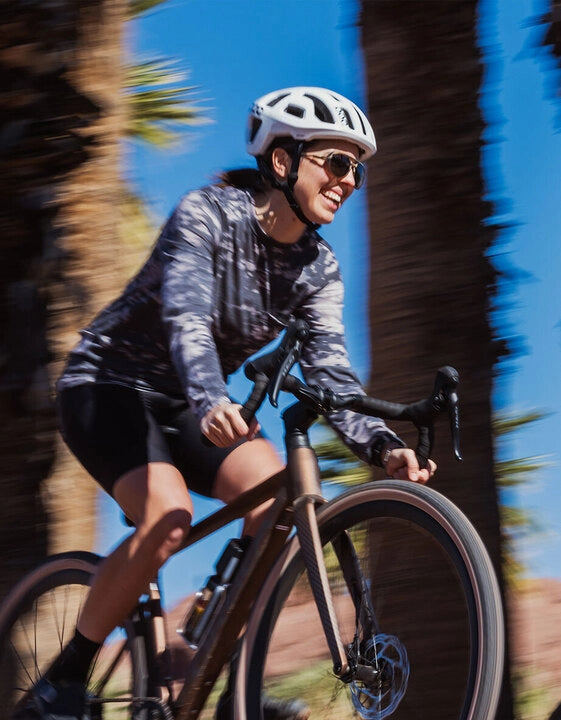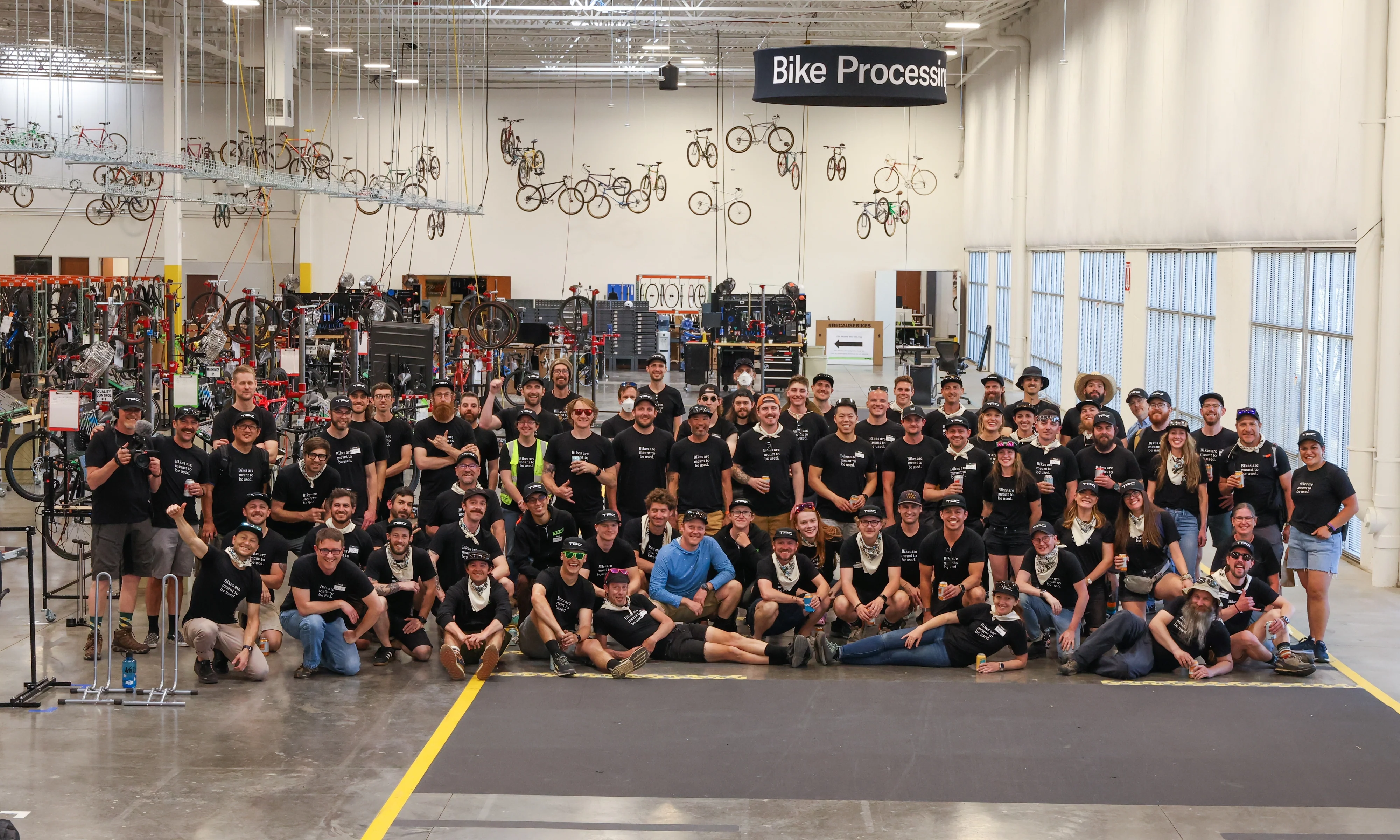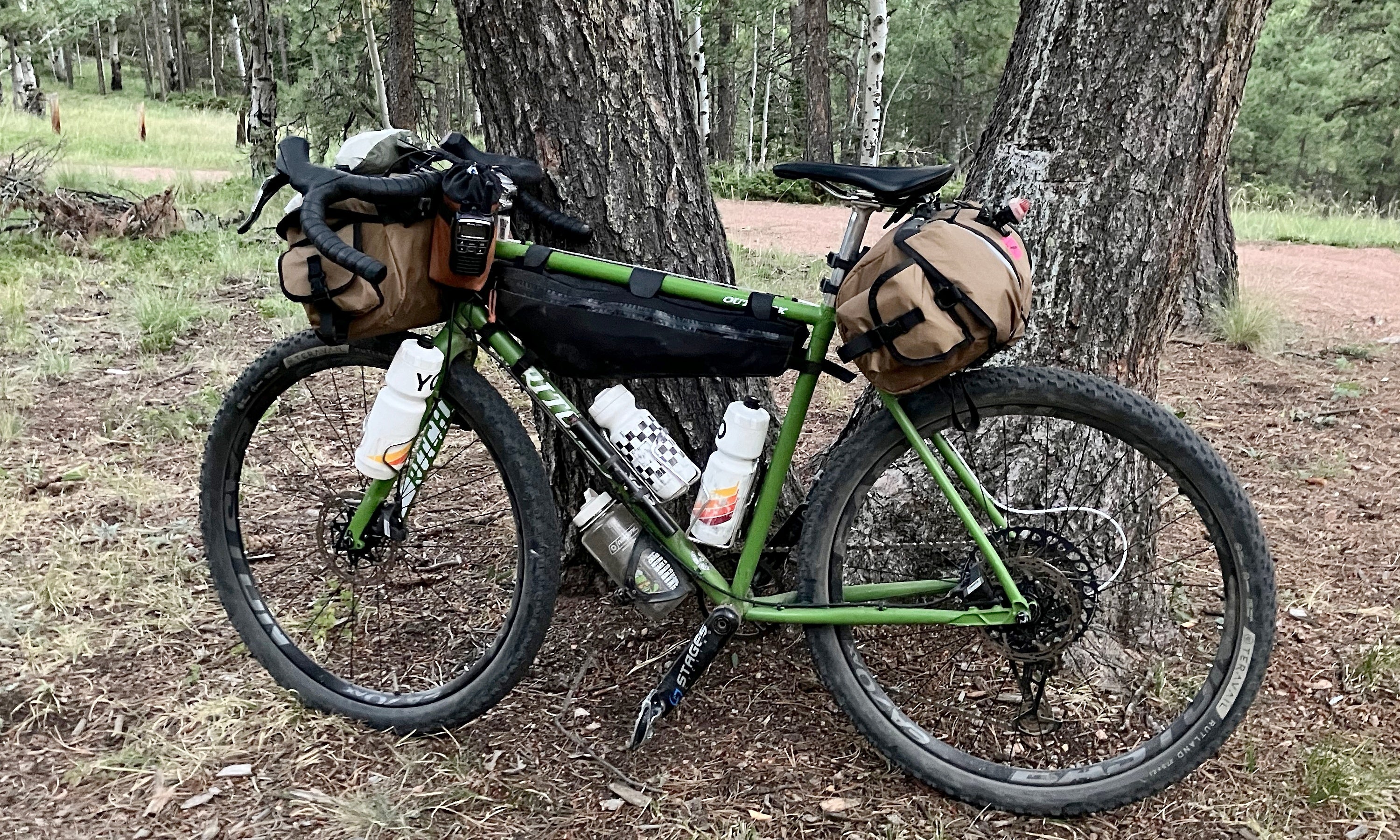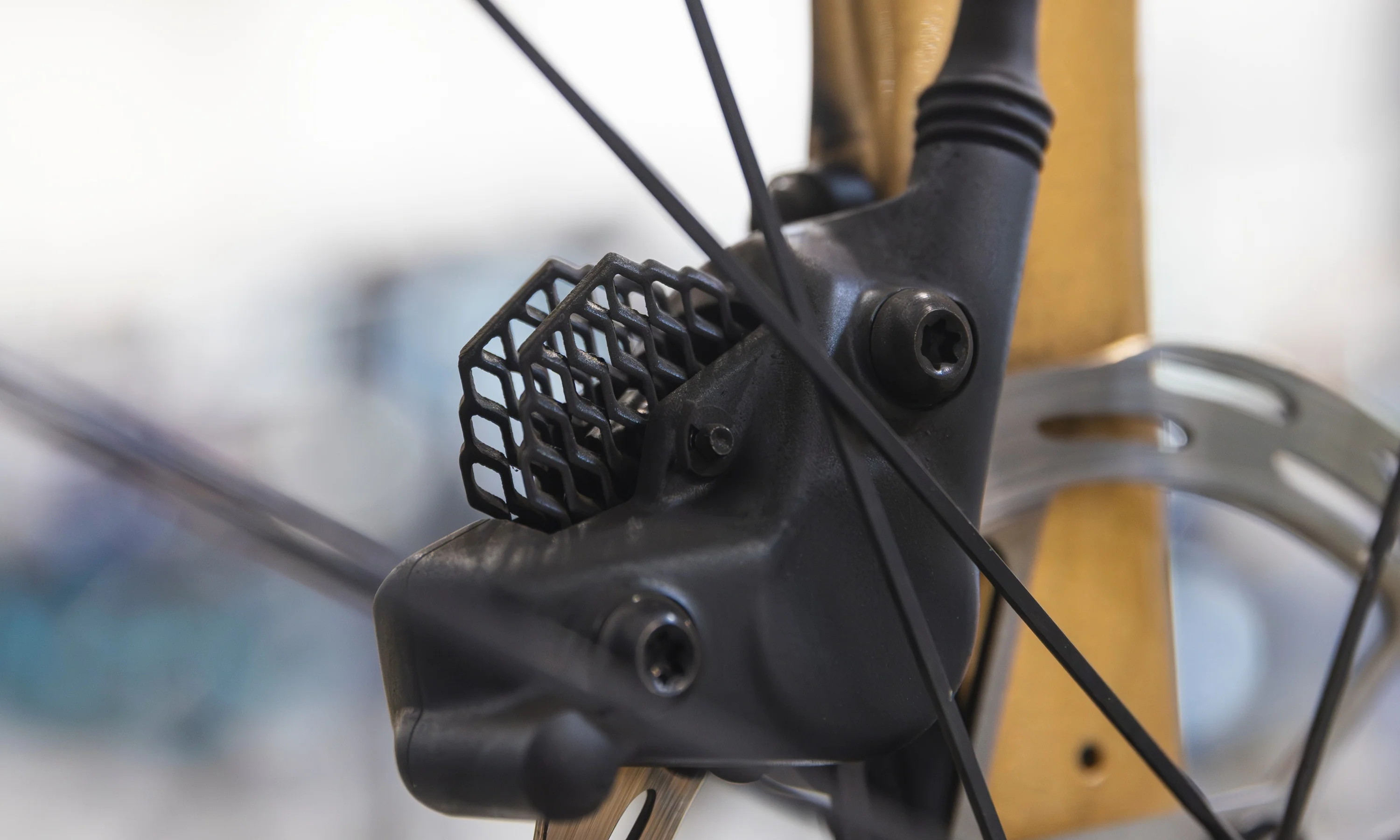Editor's note: Every year, Rapha challenges cyclists to ride 500 kilometers in the week between Christmas and New Year's Day. In Seattle, a tradition has grown where a group of riders will take on the entire distance in one single brevet ride. Lydia Tanner took on this challenge in 2019 and wrote about the experience.
[button]SHOP BIKES[/button]
I soaked a brown paper towel in cold water to wipe the road grit off my face, laughing a little at the futility of it. We were 13 hours and 150 miles into the Festive 500 Brevet. I knew there would be so, so much more grit — but I had to do something to feel normal.
As I limped out of the bathroom and down the gleaming aisles of the Forks Thriftway, my heavy, wet shoes felt like robot feet. I grabbed some tamales and a bag of cookies and joined my friends huddled in the grocery cart corral. With each blast of cold air through the sliding doors, my brain screamed that I was making a fundamental error.
I’d never ridden this far before, and we still had eight or so hours before our planned motel stop. It was dark, it was raining, and the only building in the next 70 miles was a correctional facility. Waves of fear and doubt washed over me, alternating bizarrely with my logistical checklist:
Plug in your lights.
What if you get hypothermic?
Change your socks.
What if somebody crashes?
Eat your cookies.
You’re not even half-way.
What if you get run off the road?
...Is this where you bail?
Eat your cookies.
I’d thought that riding in the dark and rain would be my crux, but in that moment I realized leaving the Thriftway would be way harder.
The Rapha Festive 500 involves riding 500 kilometers (around 300 miles) in the days between Christmas and New Year’s Day. Cyclists being cyclists, there are always folks who attempt the whole thing in one push — and a small crew in Seattle has made it a tradition over the last four years. The routes, plotted by Rapha manager Brandon Camarda, are constantly evolving, which means not even the veterans know what the ride will bring.
The 2020 edition of the Brevet linked logging roads around the Olympic Peninsula, starting and finishing at the Seattle clubhouse for a total of around 340 miles and 16k feet of climbing, all self-supported. I wasn’t going to do it — I had converted 500 kilometers to miles (twice, because I’m bad at math), and decided the resulting number was far, far outside my acceptable range.
Still, I tagged along with Brandon when he drove the route to mark services. It took us three days. I noted mossy bridges with crumbling bollards, roads so narrow they felt like trails, and long stretches without any sign of humans except the (inexplicable) road. In a word, it felt raw, even in a car.
I went back to work in Colorado, thankful to be starting my training for another nice mountain bike season — but then my brain started dishing up these involuntary flashbacks to the peninsula: quiet forests so dense they seem to change the time of day; gravel roads shrouded in mist. For some reason, all my memories smelled like woodsmoke. I started wondering what it would be like to ride for 30-plus hours.
I sat down with my friend Lynnly, who had done this ride the previous year, hoping she’d talk me out of it. Instead, she sold me a pair of winter shoes and signed us up. I guess everyone needs a friend like that.
[newsletter]
Lynnly posted about the brevet on social media, but I kept quiet; I didn’t want to have to admit it publicly if I scratched. The sheer distance, the route, the weather, and the gear (bags? fenders? lights?) was all strange and intimidating to me. From stage racing and gravel riding, I could guess at what I’d need physically and mentally — but I knew I didn’t really know, and that was terrifying. In better moments my fear felt similar to pre-race nerves; in worse moments I felt like I’d signed up for something grossly dangerous.
The days before the ride slipped away far too quickly until the morning I found myself shivering with Lynnly and 40 or so other riders on the 6:20 Bainbridge ferry. We ate some tater tots and tried to pretend it was just another long day on the bike. We filtered off into the pre-dawn dark, and I felt a glorious relief, as we moved from anticipating the ride to actually doing it.
Another women’s team welcomed Lynnly and me into their paceline, and sunrise saw us joking around, reminding each other to eat, and enjoying the views. We stopped in a hippy grocery store at 90 miles, and I felt very satisfied with my lunch choices: a turkey burger patty, macaroni and cheese, and an espresso with sugar. I pocketed two big fig cookies, and we set out for our next leg just as the rain began to fall.
Sunset saw us skirting a serene blue lake on a dirt road, which veered into thick woods, amplifying the deepening dark. I tucked in behind a friend’s wheel, rain pants swishing with each turn of the cranks. Our world shrank slowly to the circles illuminated by our lights, and I was so thankful for her pedal stroke, which was smooth, no-nonsense. Someone’s riding style can be so important in moments like that.
I passed into “longest ride ever” territory without even realizing it, and after a few more miles of narrow bridges, traffic, and road spray, we rolled into the town of Forks. We descended en masse upon the Thriftway, and the kind folks working there let us arrange all our gritty, dripping gear among the grocery carts.
Confronted by the difference between us (cold, hungry, marooned in the dark with our bikes) and the civilized world (warm, well-lit, and overflowing with cookies and power outlets), my fear returned in full force.
Nobody asked you to do this.
You’re being so stupid.
Is this where you bail?
As I rode the mental waves and tried my best to take care of my body, I was surprised to feel a warmer, calmer sort of clarity under all the fear. In cycling, and probably most sports, you start to appreciate the moments when you get to the edge of what you know: They cost you more and more of your comfort, which makes them feel more valuable. Sitting in that cart corral, surrounded by friends in various states of damp exhaustion, I knew I was truly there, and I couldn’t waste this chance to see what came next.
Riding back out into the dark and rain felt reckless, but also like an act of radical trust in myself. Once again, the moment I shifted from anticipating riding to actually doing it, the fear melted away.
I don’t remember exactly how hard it was, but I do remember forming an assembly line to pass bikes over a fallen tree. I remember the taste of road salt on my lips, squinting for what felt like years into the rain, and being so proud when I could take a good long pull. I remember the way a kind word, a high-five, or a hug can feel like a life preserver chucked through the dark, and I’ll never forget the steam curling off our bodies as we stood by a fire outside the motel at 2 a.m.
After Forks, the fear never returned, and I think it’s because I stopped trying to outsmart the future; I came to believe I could handle the present instead. Leaving the motel (damp chamois, swollen knees, pockets full of Oreos) just felt obvious. Of course, we would ride more. It was an amazing way to exist for a while, just moving patiently, solving what problems arose, and feeling so thankful to share the road and the wind with good humans.
Even once we’d ridden the Bremerton ferry and filled out our brevet cards at the finish, changed into warm clothes, and had a good meal, I don’t think I ever quite acknowledged it was over. Sure everything on my body was basically ruined, and I definitely shouldn’t have ridden more — but I’d decided so many times not to stop that stopping didn’t feel real. It still doesn’t.
There are longer and harder events out there, and plenty of easier ones. But I think any time you find the limit of what you know, and try to live in the present despite your fear of the future, is time well spent.
See our Seattle-bike-shops resource to find info on local bike stores, trails and events.
[button]SHOP BIKES[/button]
Photos courtesy Nick Strohmeyer and Rapha













